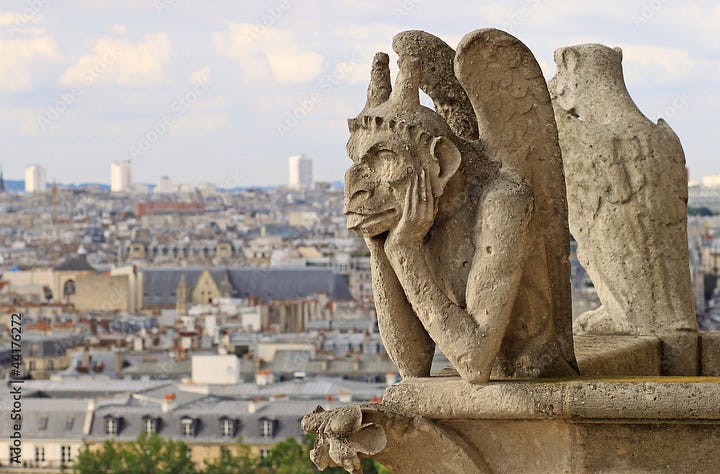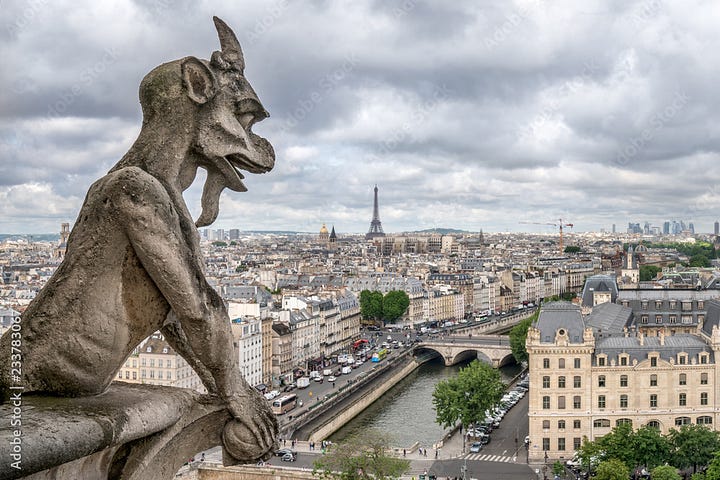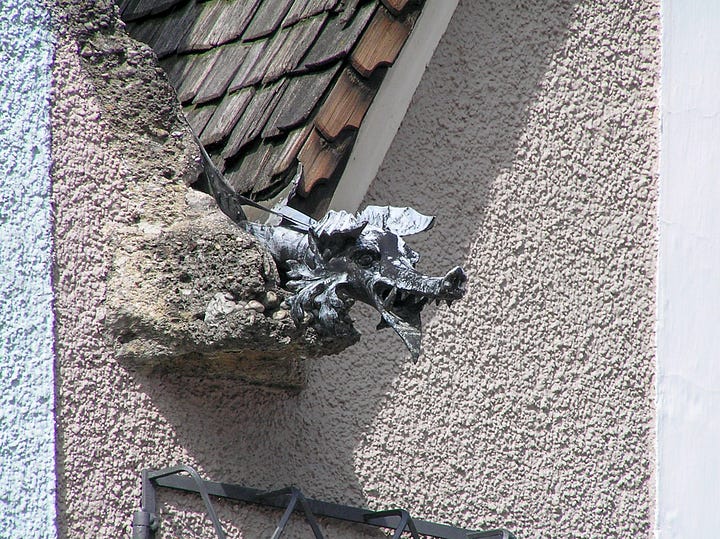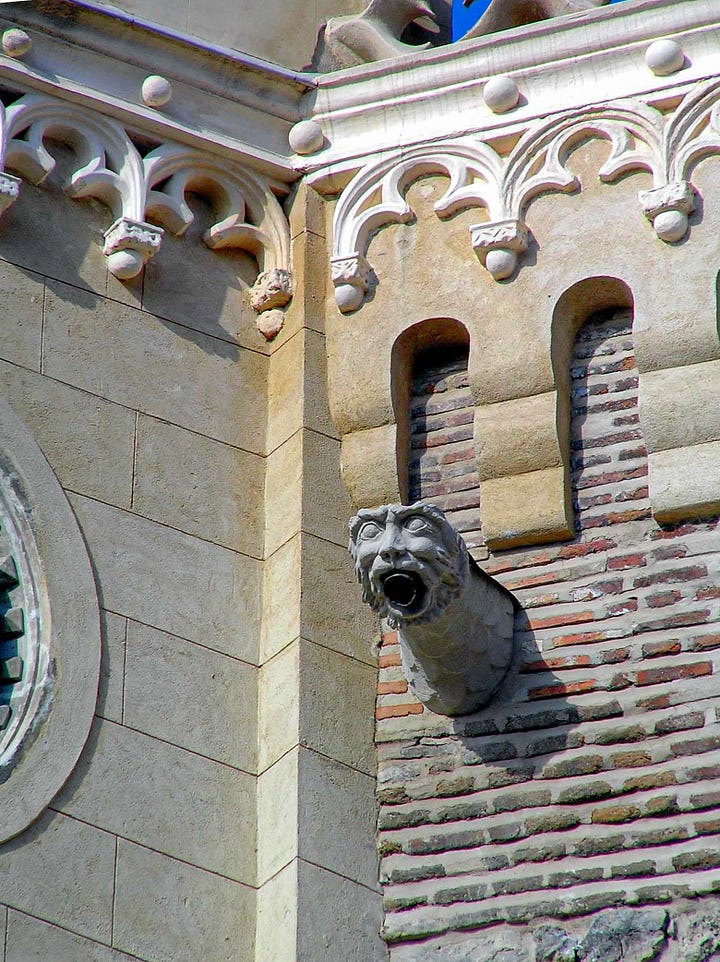Gargoyles, the Grotesque and the Beautiful
Mythology Meets Architecture to Ward Off Modern Day Bad Mojo
Many of us feel the weight of the world growing heavier upon us day by day. Job lay-offs, industries dying due to AI takeovers, and certain people or “agencies” poking through our private details for who knows what illicit gains have us hoping that we’ll just survive to get to the other side if there is another side. I know I need a break sometimes from the constant barrage of news: the doom-scrolling and terror video watching in the name of being informed.
In my neck of the woods, it’s ski week for the schools, so those still able to enjoy the week away in some place more exotic or less terrifying than home, are posting pictures of their travels on the social media platforms that they feel might be safe-ish. Some of these people are posting from fun getaways in Europe complete with snaps of museums, parks, and cathedrals with gargoyles. Who doesn’t love gargoyles? I love a good gargoyle. And they are a timely art piece – a work of carved beauty in their intricate ugliness and maybe a little bit of good mojo to get us through these harrowing times of what-could-possibly-be-next.
Like most people, I’ve known gargoyles as the statues adorning big buildings. Some people may be fond of gargoyles due to Disney’s film, The Hunchback of Notre-Dame, a take on Victor Hugo’s Notre-Dame de Paris, which I read in advance of a trip to Paris. A couple of days after arriving in Paris for said trip, I marched my derrière up every little winding one of the 387 Gothic steps to the top of the cathedral tower. And from the side, the base, and the top of Notre-Dame de Paris, there they were in all their grotesque glory, the gargoyles looking out across the Île de la Cité and beyond.


What are they thinking? Why are they there? They are captivating and magnificent, and a bit so-ugly-they’re-cute. I can almost imagine them as stuffed animals keeping us safe at night.
Why do I feel compelled to see and photograph gargoyles and grotesques? I have no clue. But while I was living abroad, I was fortunate to see, or at least more readily notice, great and beautiful buildings adorned with magnificent gargoyles and grotesques, each more scary than the last. For example, the wailing man grotesque from Wetzlar Dom in Wetzlar, Germany would keep me up at night if I looked at it too long.
Not far behind in the creepy-scary category are the gargoyle-shaped grotesques guarding watch over Bordeaux’s Cathédrale Saint-André.
Some gargoyles, though, can be stunning beauties.
Take the winged bull perched on Monaco’s Cathédrale de Notre-Dame-Immaculée. It’s almost regal.
As you might note, despite what we’re conditioned to think, not all gargoyles are grotesque, figuratively and literally. Just what are they, though, and what’s the difference between them if anything1? In short, if I understood the reading correctly, a gargoyle is a fantasy monster inspired by the grotesques that adorn the Cathedral of Notre-Dame de Paris. These mythological creatures are thought to frighten away evil spirits.


A grotesque2 is an architectural stone figure affixed to walls, roofs, or buildings. Grotesques are used to drain water away from buildings, in particular, religious buildings, and are sometimes shaped as gargoyles. And like gargoyles, grotesques of any shape or representation are believed to ward off evil.
So, not all gargoyles are grotesques and not all grotesques are gargoyles.
After getting a tattoo, I thought I might like another. I bounced some ideas off of a local artist to which he responded, “A gargoyle. A cute gargoyle? Gargoyles aren’t really cute.”
“I know,” I said. “But they are thought to be protectors and I need all the help I can get watching my back… maybe on my back.”
I think a lot of us feel like we need someone out there protecting us from evil - watching our backs. So, maybe we all need a cute gargoyle.”
https://en.wikipedia.org/wiki/Gargoyle_(monster)
https://en.wikipedia.org/wiki/Grotesque_(architecture)






